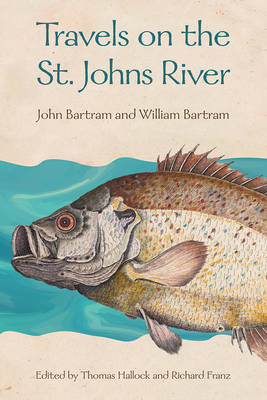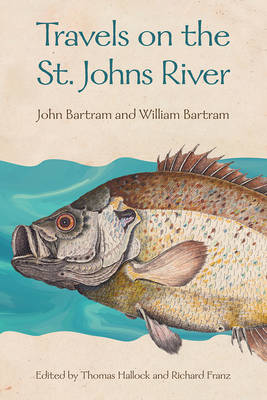
- Afhalen na 1 uur in een winkel met voorraad
- Gratis thuislevering in België vanaf € 30
- Ruim aanbod met 7 miljoen producten
- Afhalen na 1 uur in een winkel met voorraad
- Gratis thuislevering in België vanaf € 30
- Ruim aanbod met 7 miljoen producten
Zoeken
€ 37,45
+ 74 punten
Uitvoering
Omschrijving
In 1765 father and son naturalists John and William Bartram explored the St. Johns River Valley in Florida, a newly designated British territory and subtropical wonderland. They collected specimens and recorded extensive observations of the plants, animals, geography, ecology, and native cultures of an essentially uncharted region. The chronicle of their adventures provided the world with an intimate look at La Florida. Travels on the St. Johns River includes writings from the Bartrams' journey in a flat-bottomed boat from St. Augustine to the river's swampy headwaters near Lake Loughman, just west of today's Cape Canaveral. Vivid entries from John's Diary detail which tribes lived where and what vegetation overtook the river's slow current. He describes the crisp, cold spring waters tasting like a gun barrel. Excerpts from William's narrative, written a decade later when he tried to make a home in East Florida, contemplate the environment and the river that would come to be regarded as the liquid heart of his celebrated Travels. A selection of personal letters reveal John's misgivings about his son's decision to become a planter in an inhospitable pine barren with little more than a hovel as shelter, but they also speak to William's belated sense of accomplishment for traveling past his father's footsteps. Editors Thomas Hallock and Richard Franz provide valuable commentary and a modern record of the flora and fauna the Bartrams encountered. Taken together, the firsthand accounts and editorial notes help us see the land through the explorers' eyes and witness the many environmental changes the centuries have wrought.
Specificaties
Betrokkenen
- Auteur(s):
- Uitgeverij:
Inhoud
- Aantal bladzijden:
- 224
- Taal:
- Engels
Eigenschappen
- Productcode (EAN):
- 9780813080444
- Verschijningsdatum:
- 14/11/2023
- Uitvoering:
- Paperback
- Formaat:
- Trade paperback (VS)
- Afmetingen:
- 152 mm x 229 mm
- Gewicht:
- 349 g

Alleen bij Standaard Boekhandel
+ 74 punten op je klantenkaart van Standaard Boekhandel
Beoordelingen
We publiceren alleen reviews die voldoen aan de voorwaarden voor reviews. Bekijk onze voorwaarden voor reviews.











